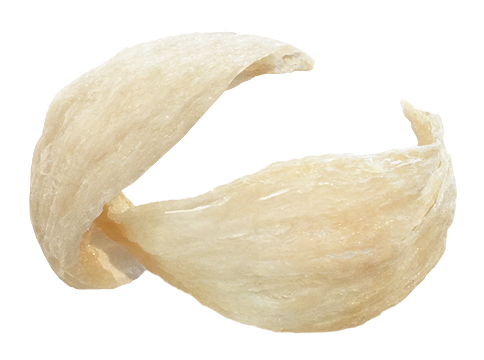Credit by Ryan De Vooght-Johnson
Edible bird’s nest (EBN) is a much-prized food in a number of Asian countries, able to command high prices. Due to the value of this food, adulteration can occur, so detailed characterisation is useful to help combat this threat. EBN is typically eaten as bird’s nest soup, although other recipes are also used.
Edible bird’s nest analysis requires multiple methods
Edible bird’s nest (EBN) is a much-prized food in a number of Asian countries, able to command high prices. Due to the value of this food, adulteration can occur, so detailed characterisation is useful to help combat this threat. EBN is typically eaten as bird’s nest soup, although other recipes are also used. The nests used are mainly those of two similar species, the edible-nest swiftlet (Aerodramus fuciphagus) and the black-nest swiftlet (Aerodramus maximus), and are largely composed of solidified saliva. The nests contain a wide variety of compounds, including proteins, diverse metabolites and triglycerides (fats/ oils), so multiple techniques are needed for analysis.
Scientists from the University of Technology, Malaysia (Skudai, Malaysia) and the University of Monastir (Tunisia) examined the compounds present in EBN samples from Johor State, Malaysia. The samples were dried and ground to a powder prior to analysis by a variety of methods, examining both polar (proteins, amino-acids and metabolites) and non-polar compounds (fatty acids from triglycerides).
Large numbers of varied compounds found in edible bird’s nests
The powdered EBN was extracted with water and the proteins present were examined by SDS-PAGE (sodium dodecyl sulphate polyacrylamide gel electrophoresis), running with a standard protein marker. In all, 16 protein bands were detected, similar to those previously reported in the literature.
EBN protein samples were hydrolysed with 6 N HCl over 24 h at 110 ˚C for amino acid analysis. In addition, samples were also hydrolysed using performic acid and basic hydrolysis for the analysis of cysteine, methionine and tryptophan. Amino acid analysis was carried out by HPLC using a Waters 2695 system fitted with an AccQ.Tag column (150 mm × 3.9 mm × 4 µm). Isocratic elution was employed, using 0.0085 M sodium acetate flowing at 1.0 mL/min. Fluorescence detection was used, with an excitation wavelength of 250 nm and emission at 359 nm. The individual amino acids were measured by comparison with a Pierce ‘H’ standard mixture. 18 amino acids were identified in all, nine essential and nine non-essential, serine being the most abundant.
Metabolite analysis on a hydrolysed mixture from EBN was carried out using HPLC/MS with a Shimadzu LCMS-2020 system, fitted with an Agilent Poroshell EC-C18 column (100 mm × 4.6 mm × 2.7 µm) kept at 40˚C. Solvent A was water, while solvent B was acetonitrile (both containing 0.1% formic acid). Gradient elution was employed at 0.3 mL/min, starting at 5% B and rising over a series of steps to 60% B. Quadrupole time-of-flight mass spectrometry (QTOF-MS) was used for detection with electrospray ionisation (ESI). 54 metabolites were identified using the METLIN database, both ‘expected’ and ‘unexpected’, including aromatics such as stilbene and tetralin, heterocycles such as 2-aminomethylpyrimidine, the drugs ethotoin and benzocaine, and various dipeptides and tripeptides.
Finally, triglycerides were extracted from powdered EBN using 3:1 acetone/water. The extract was concentrated, and the resulting solution was extracted with ethyl acetate. Column chromatography gave a mixture of triglycerides, which were converted to fatty acid methyl esters by reaction with potassium methylate. The methyl esters were examined by GC, giving an overall picture of the fatty acids present. The unsaturated acid linoleic acid was the most abundant (47%), followed by the mono-unsaturated acid oleic acid (22%): both compounds are considered to be nutritionally beneficial. The mixture of triglycerides was also shown to have antioxidant properties.
Edible bird’s nest contains beneficial compounds
The careful analysis of EBN by a variety of methods shows that it does contain some compounds beneficial to health, suggesting that is reputation as a ‘health food’ may have some basis. The analysis should provide baseline data to make adulteration of EBN, or incorrect labelling with regard to its place of origin, easier to detect. Further work is needed to confirm the presence of some of the unusual metabolites identified.
Aknowledgment
Special thank to Ryan De Vooght-Johnson who write this information regarding our research of Edible Bird’s Nest in Wiley Analytical Science.

